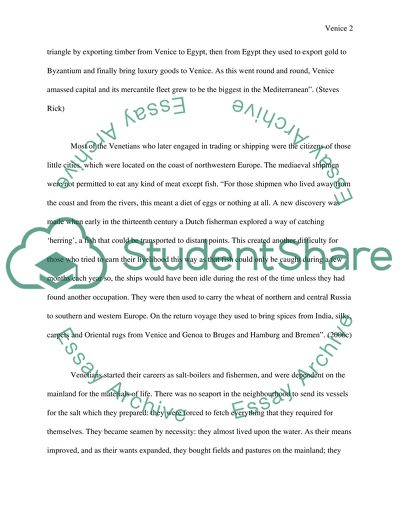Cite this document
(“The Rise of Venice during the Renaissance because of Trade and Essay”, n.d.)
Retrieved from https://studentshare.org/miscellaneous/1506953-the-rise-of-venice-during-the-renaissance-because-of-trade-and-shipping
Retrieved from https://studentshare.org/miscellaneous/1506953-the-rise-of-venice-during-the-renaissance-because-of-trade-and-shipping
(The Rise of Venice During the Renaissance Because of Trade and Essay)
https://studentshare.org/miscellaneous/1506953-the-rise-of-venice-during-the-renaissance-because-of-trade-and-shipping.
https://studentshare.org/miscellaneous/1506953-the-rise-of-venice-during-the-renaissance-because-of-trade-and-shipping.
“The Rise of Venice During the Renaissance Because of Trade and Essay”, n.d. https://studentshare.org/miscellaneous/1506953-the-rise-of-venice-during-the-renaissance-because-of-trade-and-shipping.


